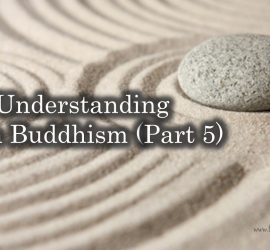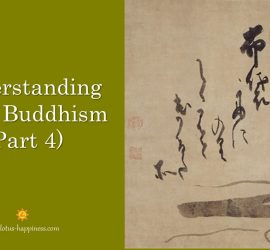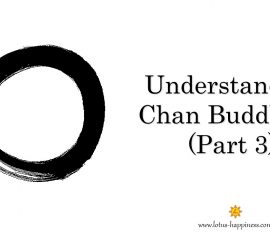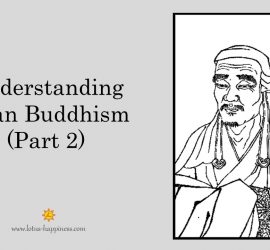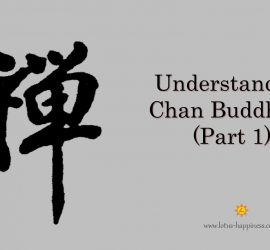Understanding Chan Buddhism (Part 5) Monastic life in Chan sect As Chan sect emphasizes the Dharma transmission from the master to the disciple, there has a well-organized system in the monastic order and a structured monastic life for the monks. The practitioners are required to work very hard in their daily […]
Chan Buddhism
Understanding Chan Buddhism (Part 4) Development of Chan sect after Sixth Patriarch After the Sixth Patriarch. the Chan sect spread out into two main branches headed by: Huai Jang of Nan Yo Mountain [南嶽懷讓] Hsing Sze of Ching Yuan Mountain [青原行思]. Huai Jang’s successor was the great Chan master Ma Tsu [馬祖], who […]
Understanding Chan Buddhism (Part 3) Chan and Dhyana Though Chan is the Chinese transliteration of Dhyana in Sanskrit, it is not of the same context as Dhyana in its own sense. Dhyana in Sanskrit means high bliss states (or called Samadhi) achieved through the processes of meditation (known as Samatha […]
Understanding Chan Sect (Part 2) The Second Patriarch – Hui Ko The transmission Gatha of Bodhidharma is as follows: My aim in coming to this country Was to transmit the Dharma and liberate all beings A flower of five pedals Cannot fail to fruit. The Gatha predicted that there would […]
Understanding Chan Buddhism (Part 1) Ch’an [禪] is a Chinese word translated from the pronunciation of a Sanskrit word ‘Dhyana’ [禪那] in abbreviation. The word ‘Dhyana’ is usually not translated, but rendered as ‘meditation’, which this sect emphasizes. Dhyana is the outcome of meditation. However, Dhyana is much more extensive […]

